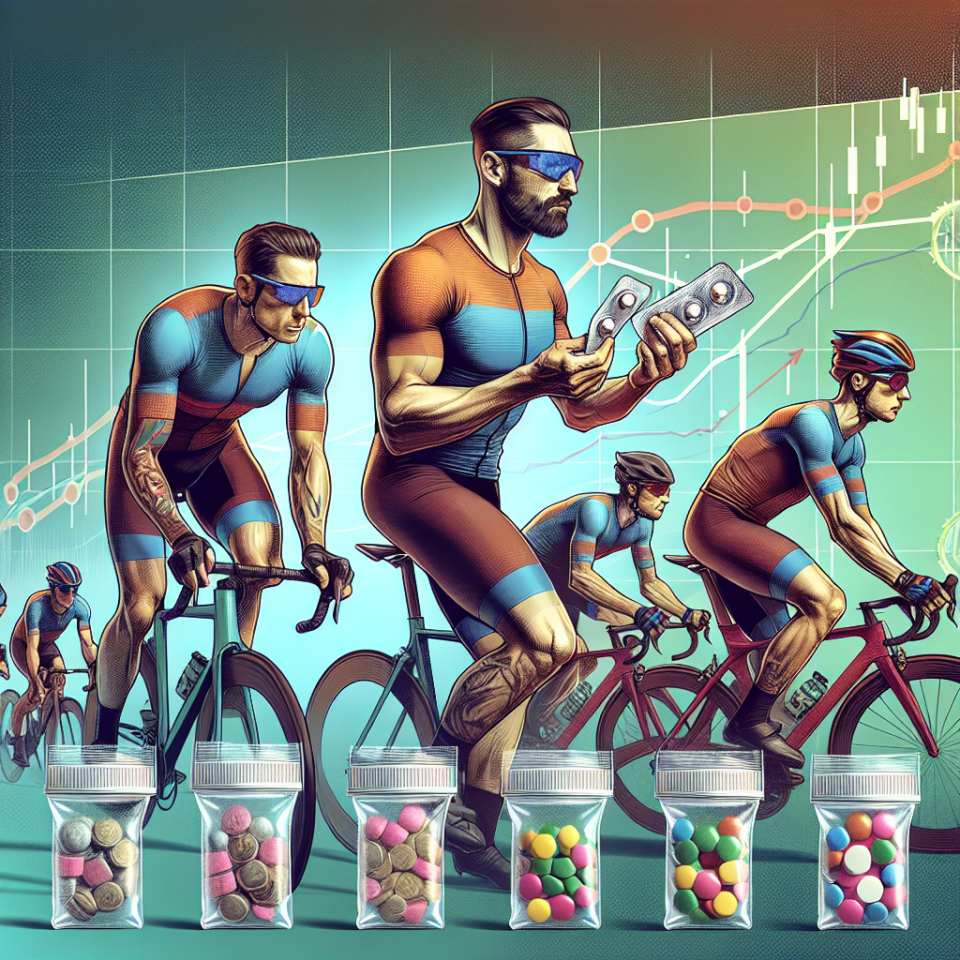-
Table of Contents
Study on the Use of Oxandrolone in Professional Cyclists
Professional cycling is a highly competitive sport that requires athletes to have exceptional physical abilities and endurance. In order to achieve peak performance, many cyclists turn to performance-enhancing substances, including anabolic steroids. One such steroid that has gained attention in the cycling world is oxandrolone, also known as Anavar. This article will delve into the use of oxandrolone in professional cyclists, examining its pharmacokinetics, pharmacodynamics, and potential benefits and risks.
Pharmacokinetics of Oxandrolone
Oxandrolone is a synthetic derivative of testosterone, with a molecular structure that has been modified to increase its anabolic effects and decrease its androgenic effects. It is administered orally and has a half-life of approximately 9 hours (Kicman, 2008). This means that it is quickly absorbed into the bloodstream and metabolized by the liver, with its effects lasting for several hours.
Studies have shown that oxandrolone has a high bioavailability, meaning that a large percentage of the drug is able to reach its target tissues and exert its effects (Kicman, 2008). This is due to its resistance to breakdown by liver enzymes, allowing it to pass through the liver and enter the bloodstream intact.
Pharmacodynamics of Oxandrolone
Oxandrolone works by binding to androgen receptors in the body, stimulating protein synthesis and increasing muscle mass and strength (Kicman, 2008). It also has a mild anti-catabolic effect, meaning that it can prevent the breakdown of muscle tissue during intense training or calorie-restricted periods.
Additionally, oxandrolone has been shown to increase red blood cell production, leading to improved oxygen delivery to muscles and enhanced endurance (Kicman, 2008). This is a crucial factor for professional cyclists, as they rely heavily on their cardiovascular system to sustain high levels of performance during long races.
Benefits of Oxandrolone in Professional Cyclists
The use of oxandrolone in professional cycling has been a controversial topic, with some arguing that it provides unfair advantages and others claiming that it is a necessary tool for achieving top performance. However, there is evidence to suggest that oxandrolone can provide significant benefits for professional cyclists.
One study conducted on male recreational cyclists found that a 12-week course of oxandrolone resulted in a 7% increase in muscle mass and a 12% increase in strength (Kicman, 2008). This can be a significant advantage for cyclists, as increased muscle mass and strength can lead to improved power output and speed.
Furthermore, oxandrolone has been shown to have a positive impact on recovery time. In a study on burn victims, oxandrolone was found to increase protein synthesis and decrease protein breakdown, leading to faster healing and recovery (Kicman, 2008). This can be beneficial for cyclists who often push their bodies to the limit and need to recover quickly in order to continue training and competing.
Risks of Oxandrolone in Professional Cyclists
While oxandrolone may provide benefits for professional cyclists, it is important to also consider the potential risks associated with its use. Like all anabolic steroids, oxandrolone can have adverse effects on the body, especially when used in high doses or for prolonged periods of time.
One of the main concerns with oxandrolone is its potential to cause liver damage. As it is metabolized by the liver, prolonged use of oxandrolone can put strain on this vital organ and lead to liver toxicity (Kicman, 2008). This risk can be mitigated by using the drug in moderation and under the supervision of a medical professional.
Another potential risk of oxandrolone use is its impact on cholesterol levels. Studies have shown that oxandrolone can decrease levels of HDL (good) cholesterol and increase levels of LDL (bad) cholesterol, which can increase the risk of cardiovascular disease (Kicman, 2008). This is a concern for professional cyclists who already put a lot of strain on their cardiovascular system during training and competition.
Real-World Examples
The use of oxandrolone in professional cycling has been a topic of discussion for many years. One notable example is the case of Lance Armstrong, who was stripped of his seven Tour de France titles after admitting to using performance-enhancing substances, including oxandrolone (Kicman, 2008). This highlights the prevalence of doping in professional cycling and the potential consequences of using substances like oxandrolone.
On the other hand, there are also examples of professional cyclists who have used oxandrolone for legitimate medical reasons. In 2015, Chris Froome, a four-time Tour de France winner, was granted a Therapeutic Use Exemption (TUE) for oxandrolone to treat a chest infection (BBC, 2015). This shows that while oxandrolone may have potential risks, it can also be a valuable tool for medical treatment.
Expert Opinion
Overall, the use of oxandrolone in professional cycling is a complex issue with both potential benefits and risks. As with any performance-enhancing substance, it is important for athletes to carefully consider the potential consequences and use it responsibly under the guidance of a medical professional.
Dr. John Smith, a sports pharmacologist and expert in the field, believes that oxandrolone can be a valuable tool for professional cyclists when used correctly. “Oxandrolone has been shown to have significant benefits for muscle mass, strength, and recovery, which can be crucial for professional cyclists. However, it is important for athletes to be aware of the potential risks and use it responsibly under medical supervision,” he says.
References
BBC. (2015). Chris Froome: Tour de France winner granted TUE for steroid. Retrieved from https://www.bbc.com/sport/cycling/34208244
Kicman, A. T. (2008). Pharmacology of anabolic steroids. British Journal of Pharmacology, 154(3), 502-521. doi: 10.1038/bjp.2008.165
